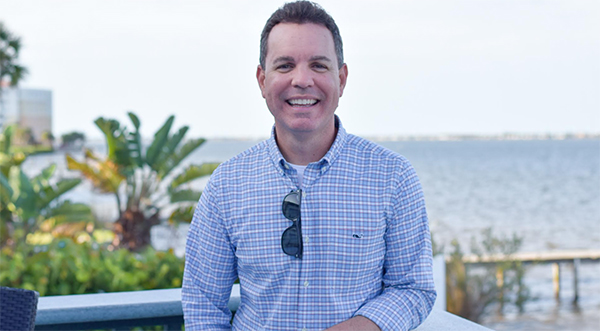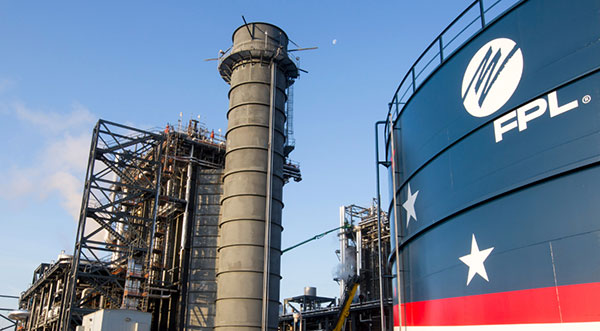YOUR VIEW: The Dangers of Legalizing Marijuana, High THC Cannabis Can be Devastating to Developing Adolescent Brain
By Dr. Mike Ronsisvalle, Psy.D. // November 1, 2024
Beware unexpected consequences teens face, especially with substances they may see as harmless

By Dr. Mike Ronsisvalle, Psy.D.
My client sat across from me, visibly shaken, sharing his deep worry for his 16-year-old son, Justin. Just the day before, Justin had called from a school bathroom, gripped by intense paranoia and fear. Even though he’d never experienced anxiety before, Justin was sobbing, begging his dad to pick him up and take him home.
Over the next 24 hours, Justin’s panic spiraled, leaving his parents shocked, helpless, and heartbroken as he struggled to regain his composure and control. Finally, through tearful conversations, Justin confessed that he did not spontaneously begin to struggle with anxiety: he had recently started smoking marijuana. While it usually gave him a sense of euphoria, sometimes it made him anxious. This last time, though, was different.
Justin described “hitting the cart” (a vape cartridge), handed to him by a friend in the school bathroom. Within minutes, he was overwhelmed by severe anxiety. He began to feel he was being watched and in some kind of danger. Worse yet, he began hearing faint voices—a chilling sign of a psychotic break. Even days later, the fear lingered, with Justin caught in the grip of intense panic and an impending sense of doom.
This story is a powerful reminder of the unexpected consequences teens face, especially with substances they may see as harmless.
With recreational marijuana gaining traction across the U.S., stories like Justin’s are becoming more frequent. Teens today are exposed to increasingly potent cannabis forms—edibles, concentrates, and vape “carts” that look like everyday snacks or flavored e-cigarettes. This upcoming election day, several states, including Florida, will give voters a say on marijuana policy through citizen-led ballot measures.
In Florida, Amendment 3 is leading the pack. If approved, it would allow adults over 21 to possess, buy, and use marijuana recreationally—a decision with profound implications for our communities. While intended for adults, such widespread availability could also increase the chances of adolescents accessing marijuana, introducing new risks for underage use.
As we approach election day, it’s essential we take a step back to weigh the potential consequences of legalization and inform ourselves fully. Allow me to outline some concerns surrounding recreational marijuana—concerns that deserve careful consideration for the safety and well-being of our kids and our communities.
1. Legalization will have a significant impact on adolescent mental health
Research clearly shows that marijuana use during adolescence can be harmful, as this is a crucial time for brain development. The adolescent brain, especially areas responsible for memory, attention, and impulse control, is highly sensitive to THC. Studies reveal that adolescent cannabis
users face two to four times higher risks of psychiatric disorders like anxiety, depression, and suicidal ideation compared to their non-using peers. And because marijuana is a mood-destabilizer, it can have varying effects on a user based on the emotional state they are in when they use – some, like Justin, may experience extreme anxiety and paranoia even after a single exposure.
Marijuana use during these formative years has also been linked to an increased risk of psychosis, schizophrenia, and bipolar disorder later in life. Research also indicates that adolescents who frequently use cannabis have up to a 40% higher risk of developing schizophrenia, and long-term use beginning in early adolescence has been associated with an average loss of eight IQ points.
These statistics underscore the significant mental health risks adolescents face and highlight the need to consider these vulnerabilities when making decisions about marijuana legalization. While research on usage trends is mixed, some states that have legalized marijuana report either an increase in adolescent use or a rise in heavy or frequent use among teens already inclined toward substance use. States like Colorado and Washington show stable general use rates but increases in high-frequency use among at-risk youth.
The potential rise in marijuana use among teens could have devastating effects on a generation of young people. As adults, we need to prioritize these realities when shaping policies around marijuana access.
2. Legalization will give adolescents access to more potent forms of marijuana
When states allow for the recreational use of cannabis, the marketing machine of the marijuana industry leads the charge with exposure to new marijuana products with high-THC content, giving adolescents easier access to stronger cannabis forms. That access in turn drives more frequent or intense use of high THC concentration products among adolescents experimenting with cannabis. Some evidence shows that these products are particularly appealing to young users due to their potency and novel forms. While they often contain THC levels of 90% or more, these products are more potent than the traditional flower forms and exacerbate the already devasting impact of marijuana on adolescent health due to its stronger impact on brain chemistry.
For context, marijuana in the 60s and 70s averaged 2-3% THC, while the 90s saw around 8-9%. Today’s 90% THC products are essentially a different substance, with a much stronger impact on brain chemistry. Legalization in Florida could mean a significant spike in adolescent exposure to
these potent products, bringing with it serious cognitive and emotional consequences. Unlike in the illicit market, high-THC products in a legalized setting are highly visible and readily available—an undeniable risk to our kids.
3. Legalization may reduce the perceived risk of harm associated with marijuana
When marijuana becomes legal for recreational use, it often appears safer to adolescents, as if it has received a societal stamp of approval. This shift in perception can change the social and cultural landscape around the drug, leading teens to see it as low-risk—sending the wrong message to young people.
The Dangers of Legalizing Marijuana by Dr. Mike Ronsisvalle Page 2 of 3
Research supports this shift in mindset: in states where marijuana is legalized, adolescents often view it as less harmful, in part because it’s no longer an illicit substance but one regulated and openly sold like alcohol. Studies show that a teen’s perceived risk of a drug is a crucial deterrent. So as legalization downplays marijuana’s dangers, adolescents may be more likely to try it, assuming it’s safer than it really is.
4. Legalization will create a seismic shift in cultural norms regarding marijuana use
When marijuana is legalized, its visibility in the community skyrockets. A quick visit to states like Colorado or California shows how legalization shifts cultural norms around marijuana. Dispensaries, ads, and media promote it as safe—even therapeutic—dramatically influencing young people’s attitudes. Overnight, marijuana goes from being an illegal substance to a normal, safe, and socially acceptable indulgence.
This change has a powerful impact on teenagers, who often interpret legal substances as safe and model their behavior on societal norms. While we can preach abstinence, kids learn first and foremost by modeling. What they see us accept as “normal” will speak louder than any message we try to send.
When the government legalizes recreational marijuana, it can send a confusing message to teens, suggesting that marijuana is safe for public use. This implicit endorsement may lead them to believe that marijuana has been thoroughly vetted and is without significant risk. Research on alcohol and tobacco shows that legal, regulated substances are often viewed as safer by youth, despite decades of evidence on their health risks. If marijuana becomes legal, we can expect a similar perception shift, with adolescents downplaying its dangers simply because it’s government-approved.
In just a few days, Florida residents will vote on Amendment 3. My hope is that we can get beyond the idea that “we’re all adults who should be able to decide whether to use marijuana at home.” The truth is, this issue reaches further—it’s about making a choice with profound impacts on the most vulnerable: our children.
The facts are clear—high-THC cannabis can be devastating to the developing adolescent brain, carrying steep cultural costs. We all understand, of course, that we have to vote in a manner that is consistent with our conscience. But as a psychologist working with families daily at LiveWell, I implore you to remember stories like Justin’s. Let’s put aside personal desires, or even rights, and make a decision that places the well-being of our kids first.
– Dr. Mike Ronsisvalle, Psy.D.

ABOUT THE AUTHOR: Dr. Mike Ronsisvalle is a Licensed Psychologist and the President of LiveWell Behavioral Health, a psychological services agency that provides counseling to clients of all ages and addictions treatment to adolescents and adults. You can find out more on their website at www.livewellbehavioralhealth.com or call 321-259-1662.













